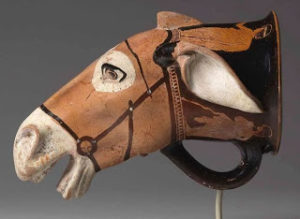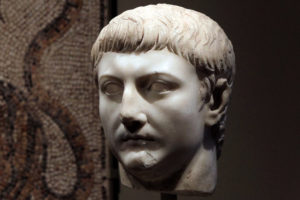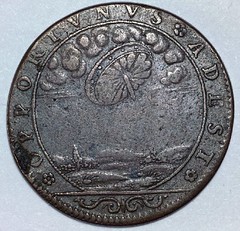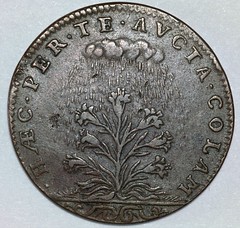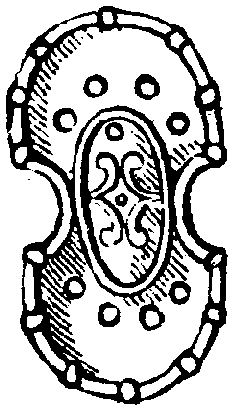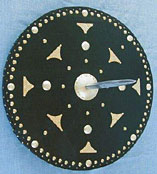Here is a great article which clearly distinguishes between sensationalized, hysterical overstatements by the archaeology lobby and its fellow travelers, and the far more modest realities of the actual extent of illicit antiquities trading:

Francisco Goya (1746–1828) El Coco (The Bogeyman), Los Caprichos #3, 1797-1799, etching, aquatint, Museum del Prado
The international art market as cultural bogeyman
https://culturalpropertynews.org/the-international-art-market-as-cultural-bogeyman-part-1/
[This extensive and authoritative article should be read in full from the above link. Some excerpts are given here to provide a glimpse into its merits.]
How confusion, complacency and politics play their part
Ivan Macquisten - September 24, 2019
Formerly Editor of Antiques Trade Gazette, Ivan Macquisten is a writer, commentator, analyst, collector and campaigner in the international art market. His work includes advising the Antiquities Dealers Association (ADA) and International Association of Dealers in Ancient Art (IADAA), as well as trade organizations in other sectors and the UK government.
As the issues over cultural property become more complex and the arguments more entrenched, it is timely to take a moment to review how we got here and what the implications are.
The antiquities trade is the most politically sensitive area of the culture sector and of the international art market because it involves the buying, selling, private and public ownership of ancient art and artefacts that are considered to be part of other nations’ cultural heritage.
The notion of one nation possessing the cultural heritage of another has largely become anathema today because it is so closely associated in the minds of many with conquest and colonial exploitation. This has become increasingly the case in recent years as rights issues concerning race, gender and religion have come to the fore like never before.
Perhaps the best-known example of how cultural heritage has been politicised is the continuing dispute over the Elgin Marbles (also known as the Parthenon Marbles), but numerous other cases have recently come to prominence, from the Easter Island head in the British Museum to President Macron’s decision to institute a wide-ranging restitution policy from French museums to African nations – a policy that is now facing considerable difficulties because of conflicting legal and ethical positions.
Ethical issues around restitution are complex; why single out Nazi-looted art for special treatment, for instance, but ignore the rights of families whose ancestors were murdered in the terror of the French Revolution and had their property seized, which now forms the basis of other collections? What about the collection of Charles I? How far should one go back to right wrongs? And how often is it a simple case of right and wrong? The Benin Bronzes, for example, were created from the fruits of slavery; some even argue that returning them to their Nigerian source would be akin to condoning slavery.
Demands for restitution are often made by those who have little real understanding of – or interest in – the circumstances under which many artefacts were acquired.
Theft, looting and trafficking have certainly played their part, but what is largely ignored is that source nations also participated in extensive international trade in their own cultural heritage across the centuries. Indeed, in many cases what are now seen as treasured cultural artefacts were actually created as trade goods, notably ancient coins. In the 19th and early 20th centuries, nations including Egypt benefited from operating a partage system, whereby foreign interests provided the money and expertise for archaeological excavations and study in return for a share of the spoils of discovery with the agreement of the source country’s authorities. Most famously, this applied to the Tutankhamun expedition launched by Lord Carnarvon with the help of Howard Carter.
Egypt licensed more than 100 dealers to sell artefacts during a period of well over a century, whilst also operating a saleroom from the Cairo Museum for decades. Countless pieces left the country legally, sanctioned by the authorities.
Further issues addressed in the following sections cloud the picture. What is cultural property? What are antiquities? How do they differ? Why is it so difficult to distinguish what is legal and what is looted? Whose rights are more important and why? What would significant policy change mean and what would its wider impact be? What motivates the various interest groups in this field and how far should we rely on what they say? How reliable is the data and information published by internationally recognised bodies like UNESCO, Interpol and the European Commission? And how does propaganda, rather than fact, influence policy change?
Summary of key issues
Much of the problem surrounding the debate on cultural heritage arises from a lack of data, but other issues also play their part: conflicting definitions of what is being discussed, a lack of consistency across international policy and conventions, cross-cultural misunderstanding when debating the issues, political bias, propaganda and competing motives, confusion between legal and moral claims, as well as ideological ones, and intellectual failure accompanied by confirmation bias. Another basic issue is the simple question: What is the antiquities trade?
What is cultural property/heritage?
The definition varies to some degree between most of the important international laws and conventions. Some are more specific than others. Generally, it covers a wide range of art, antiques, antiquities, natural history such as fossils, books, manuscripts, film archives and coins.
...
The term cultural property/heritage is generally understood to mean only antiquities in political debates concerning the art trade. This causes considerable misunderstanding and problems because data concerning the far broader legal definition of cultural property is mistakenly applied to the much narrower field of antiquities and this can and does influence policy unduly. It is possibly the single most significant reason that statistics relating to antiquities crime are frequently grossly exaggerated.
This continues today, with the most over-the-top claim ever coming in an article published on September 13 by the Atlantic Council, a US-based think tank that “promotes constructive leadership and engagement in international affairs”.
In reporting on a recent EU-sponsored conference on illicit trade and terrorism financing, the article, titled Europe moves to curb ISIS antiquity trafficking, states as ‘Fact’ that “the trafficking of fake and stolen antiquities is worth $45 billion a year, including $20 billion in Europe alone”.
What the article does not give is give a source for its figures. This is hardly surprising considering that they are nonsense. However, despite expressing my doubts to him about this, the author Brooks Tigner insists that the claims came from Tess Davis, Executive Director of the Antiquities Coalition. I find this astonishing bearing in mind that having talked about “billions” over the past few years, the Coalition has gradually retreated from such claims in the face of evidence and, anyway, has never gone as far as even hinting at anything more than $7 billion, an equally fantastical figure. I am equally surprised that no one else in the room with expert knowledge sought to correct her, if this is the case, as the claims simply leave them open to the sort of ridicule already levelled at the claims on twitter by Chasing Aphrodite, the anti-trade blog.
According to the article, New York Assistant District Attorney Matthew Bogdanos, another expert witness to take the podium, declared that ISIS’s exploitation of the antiquities sector “is so profitable that it has its own division, alongside one for oil, with [ISIS’] structure”.
...
Unless Bogdanos now knows something that the rest of us don’t, it remains the case that the only primary source evidence for ISIS’s exploitation of antiquities is the cache of documents seized in a US Special Forces raid on Abu Sayyaf, the nominal head of ISIS’s antiquities operation, in May 2015. Those documents revealed figures relating to licences for excavation that initially allowed the authorities to estimate ISIS’s take for antiquities, minerals and metals in Syria for that year at around $4 million, although even that figure is questionable as Ben Taub reported in the New Yorker in December that year, after having the documents expertly examined.
Putting the Atlantic Council’s article’s figures in perspective: in March this year, the Art Basel report – the leading study of its kind in the world – estimated that the entire global art market in 2018 was worth around $67.4 billion. Antiquities make up about 0.5% of the market, so about $337 million, while Syrian antiquities represent about 5% of this figure, so just under $17 million. And that is the legal market, which includes all the art that has circulated for centuries.
Bear in mind, too, that other official sources for art crime bear no resemblance to the article’s claim. In 2013, the FBI art crime unit estimated all art crime globally concerning everything from Contemporary art to stamps, not just antiquities, at around $4 billion to $6 billion, but that includes crimes such as domestic burglary, vandalism, fraud and so on. The World Customs Organisation’s (WCO) Illicit Trade Report 2017, published at the end of last year, showed cultural property (so, again, all art and antiques, not just antiquities) as barely registering on the scale compared to drugs (43%) and counterfeit goods (27%). The WCO points out that poor reporting on cultural property crime at national level means the figures are incomplete, but the gap between it (0.2%) and the other crime sectors when measured in terms of the number of cases being investigated, number of seizures and volume of material seized, is a gaping chasm. Mariya Polner, Senior Policy Advisor, Enforcement and Compliance at the WCO, also in attendance at the conference, should also have been able to enlighten Mr Tigner on the $45 billion and $20 billion figures.
Perhaps rogue claims like this wouldn’t matter so much if they didn’t influence those with power and responsibility for change and law enforcement. Multiple examples of how this has been happening range from figures published by UNESCO in 2011 to those published by the European Commission to justify its recent introduction of highly restrictive import licensing regulations for cultural property due to come into force in the next few years. The latest example came on September 12 in the launch release for a new international Virtual Global Taskforce involving US Immigration and Customs Enforcement (ICE), as well as the UK’s Art and Antiques Unit at Scotland Yard and ten other countries. It was ICE who published the release, in which they claimed “Trafficking in antiquities is estimated to be a multi-billion dollar transnational criminal enterprise.”
As anyone involved in this debate knows, this is not only untrue, but has been widely and publicly debunked. The European Commission was one of those who quoted this claim in its Fact Sheet in July 2017 to justify its new import licensing regulations, giving as its source Interpol. The Works of Art Crime home page on the Interpol website did indeed state: “The black market in works of art is becoming as lucrative as those for drugs, weapons and counterfeit goods.” However, the FAQs on the same page conflicted with this. To the question “Is it true that trafficking in cultural property is the third most common form of trafficking, after drug trafficking and arms trafficking?” Interpol replied: “We do not possess any figures which would enable us to claim that trafficking in cultural property is the third or fourth most common form of trafficking, although this is frequently mentioned at international conferences and in the media.
“In fact, it is very difficult to gain an exact idea of how many items of cultural property are stolen throughout the world and it is unlikely that there will ever be any accurate statistics.”
The problem has always been that while bodies like the European Commission and ICE have been quick to source the first quote, they have ignored or been unaware of the second. Fortunately, Interpol have now updated their website and removed the offending statement, but the damage has been done.
The fact that ICE has taken the claim as gospel and promoted it in its launch release does not say much for its due diligence or inspire confidence in the new global taskforce. Accurate provenance research is as much the responsibility of politicians and law enforcement – more so because they wield true power – as it is for the antiquities trade.
...
While the antiquities market has made great strides towards transparency in recent years, with known or discovered ownership histories being published in catalogues, it is often not possible for the ownership history to extend back far enough to satisfy the critics of the trade who demand evidence that simply does not exist.
...
While the auction houses and trade associations have well-developed codes of ethics and practice, other market areas do not. Internet sales via eBay, Facebook and other platforms have been identified as a particular problem in recent years when it comes to fakes and potentially trafficked items.
What is provenance?
The trade considers that provenance is an item’s known history. Academics and archaeologists tend to consider that provenance only means an item’s fully documented and confirmed history back to the point of its creation. Again, it is important to understand this when considering the arguments around provenance. Either way, provenance is important because the more certain we can be about an item’s history, including its trail of ownership, the more certain we can be about where it came from and when. This, in turn, has an impact on how it is viewed and is likely to affect its value.
The ADA gives a detailed definition of the three types of provenance on its website, distinguishing between Hearsay Provenance, Named Provenance and Documentary Provenance. (See How Reliable is Provenance at http://theada.co.uk/faqs/)
Why is it so difficult to trace provenance back to an object’s original discovery?
It is extremely rare, if almost unheard of, for an antiquity to have fully documented provenance tracing its history back to the point of discovery. The most that can be hoped for is a sales receipt accompanied by an export licence showing that the item was exported from its country of origin according to the laws that were in force at the time. This is deemed as acceptable proof that the item was not looted and trafficked from its source country. However, it is extremely rare for such paperwork to be extant for the following reasons:
Countries of origin often had no export licensing system when items were originally exported.
Even where source countries did issue export licences, requirements rarely demanded detailed invoices or licences, certainly not to the standards required today. A single export licence might cover hundreds of items, none of them described in sufficient detail to able to identify them from the licence today.
Where hundreds of items were exported on a single licence, that licence could not have remained with each item once they were sold or handed on, even when the licence itself was retained.
Even where licences, detailed or otherwise were issued, there was commonly no requirement to keep them on record once used.
Even where sales receipts and licences were initially retained, often the paperwork has been mislaid as the years have passed and items have changed hands.
Even where sales receipts and export licences are extant, the information allowing the owner to prove that the item was exported under the relevant laws of the day is usually not available.
Why is the lack of paperwork so significant?
While many academics and archaeologists are simply opposed to any trade at all in antiquities on moral grounds, they will reluctantly accept that there is a legal right to trade in items with what they see as sufficiently documented provenance. However, it is the widespread lack of paperwork (explained above) that goes to the heart of what seems the chief insoluble dispute between the trade and those who oppose it.
Where the documentation is either wholly lacking or incomplete, opponents of the trade, including source countries such as Egypt, argue that the burden of proof should be reversed and that the antiquity should be considered stolen unless the owner can prove otherwise.
To adopt such a policy under the law – which international organisations, among others, continue to press for – would have grave implications for fundamental human rights, including those of property ownership. This applies not just to antiquities but to personal possessions in general. Which of us could provide undisputed receipts for everything we own? Should we be deprived of it if we cannot provide the evidence?
Those who advocate such changes in the law doubtless consider that what they see as the moral claim of the source country to its cultural heritage outweighs the basic human rights of the current owners of these antiquities. Even the most aggressive U.S. prosecutor of antiquities crimes, NY Assistant DA Matthew Bogdanos, found reversing the burden of proof a step too far. Speaking at the Clyde & Co seminar in London on July 11, 2017, Bogdanos challenged the concept of reversing the burden of proof, saying, we don’t demand that persons charged with rape or murder prove their innocence, so why antiquities dealers?
...
[To keep the length of this substantial post manageable, much of the original text has been elided - interested readers should consult the link to the original article.]
See also the continuation:
********************
COMMENTARY
********************
Like other veterans in the collectors' rights advocacy, I have previously pointed out that in the "publish or perish" world of academia, an enormous edifice of moralizing publications, blaming collectors (and the trade which supplies them) for looting of archaeological sites, has developed from what can justly be characterized as very slender and insubstantial foundations in factual, verifiable data.
The construction of that particular edifice parallels another disquieting trend in archaeology:
"Academic archaeologists" who rarely, if ever, get out into the field to collect data in a scientifically valid manner instead now spend their time writing about what they view as the implications to be drawn from fieldwork carried out by others, in many cases long ago. More and more, it seems, is presently being written about less and less, in the way of genuine and factual new information.
The construction of such insubstantial edifices of verbiage seems to this observer to be distressingly comparable to building a pyramid upside down - so that upon a very narrow point in actual contact with solid ground, rests the weight of an enormous structure that becomes broader and broader the further it gets from its foundation.
Inverted Pyramid
As an engineer, I naturally view such an unstable, irrational arrangement with extreme skepticism. It seems to be a sort of modern recreation of the ancient "Tower of Babel," [Genesis 11:1–9] whose narrative is now scientifically characterized as an origin myth, meant to explain why the world's peoples speak different languages.
Perhaps that is the real explanation for the present confrontation between the collecting community and archaeology: we speak different languages. They apparently have many words in common, however the words really mean very different things, according to one's perspective. It's not easy to imagine a more effective approach for creating confusion, misunderstandings and hostility.



